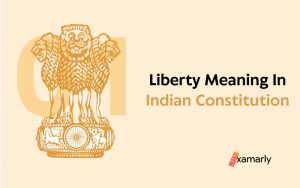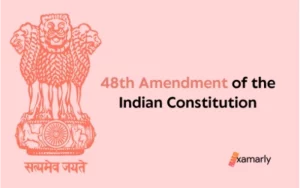The government is hoping to revive the Adopt a Heritage scheme, launched by the ministry of tourism and President Ram Nath Kovind on World Tourism Day in September 2017. The scheme’s goal is to push more people to travel and explore its rich heritage.
Tourism in India has seen a significant increase. This is because the government of India took extra initiatives to improve India’s image as a tourism destination in the last few years. This can also take the form of promoting the tourism industry under “Incredible India”.
Note: Understanding government programs is an important point of focus for students taking the IAS Exam.
The UPSC syllabus includes a section on government schemes. These topics are useful for UPSC Prelims, Mains, and UPSC Essay papers as well.
- What is the Adopt a Heritage Scheme?
- Advantages of this scheme to Government and Tourism Ministry
- Monuments Adopted By Companies & Ministry of Tourism
- Rationale Behind Adopt a Heritage Scheme: Apni Dharohar Apni Pehchan
- Major Objectives
- Significance
- What is Vision Bidding and How Does it Work?
- Previous Endeavors to Involve Corporations in Heritage Management
- Conclusion
- FAQ Related to Adopt a Heritage Scheme
- What services will be provided as part of the Adopt a Heritage Scheme?
- When adopt a heritage scheme launched?
- Why was the Adopt a Heritage Program started?
- Who qualifies as a project participant to adopt a heritage site?
- What monuments in Delhi were taken under the "adopt a heritage" program?
- Which historic sites are included in the "Adopt a Heritage" program?
What is the Adopt a Heritage Scheme?
What is the Adopt a Heritage Scheme? The Government of India has launched this scheme with the objective of developing tourism amenities at heritage sites and making them tourist-friendly.
This initiative was unveiled on September 27th, 2017, which is celebrated annually as World Tourism Day. It was launched by the Indian President.
The initiative helps private and public sector companies to collaborate on the development and maintenance of these sites. Under this scheme, a corporate can choose to adopt a monument, thereby ensuring that the Incredible India website receives professional management and restricted visibility.
It is anticipated that this program will attract more tourists and strengthen the infrastructure near historic sites.
The scheme’s goal is to improve tourism in heritage sites by encouraging private and public sector organizations to adopt historic landmarks. Since this initiative does not require any financial investment, the government does not need to provide any revenue. The selected agencies will be chosen by their vision, not financial bids.
The government has received a positive response to this scheme. Various organizations have supported the initiative. A few of the key players included in the scheme are private firms, government agencies, law firms, and schools. These organizations are known as Monument Mitras.
The firms will be in charge of operating, constructing, and maintaining the tourism infrastructure of the 105 monuments and natural heritage sites that are up for adoption.
In the event of non-compliance with rules and expressions of interest (EoI), or other non-performance-related reasons, the Ministry of Tourism has the authority to terminate the Monument Mitras.
Monument Mitras’ Action Plan:
In order to increase footfall from both domestic and international tourists, the project will focus on maintaining and developing world-class amenities, incorporating basic civic amenities as well as advanced amenities like security, ease of access, cleanliness, public conveniences, interpretation centers, illumination, and facilities for night viewing.
Advantages of this scheme to Government and Tourism Ministry
The central government has introduced a new concept – ‘Adopt a Heritage Scheme’ – under which public and private institutions with archaeological maintenance capabilities and a passion for preservation and conservation work together to help preserve and enhance the tourism value of heritage sites.
This initiative has been designed to resolve a problem related to the maintenance of grand monuments that was plaguing the tourism industry in the country. The scheme aims to push more people to travel domestically and explore its rich heritage.
Its advantages are:
- Some monuments and heritage sites are under corporate management, ensuring that their care and operations are handled more professionally.
- The agency that demonstrated exceptional foresight for the historic site will have the opportunity to connect pride with its CSR initiatives.
- On the premises of the Incredible India website, the company would likewise have restricted visibility.
Monuments Adopted By Companies & Ministry of Tourism
A list of 11 Monuments (Fort, Caves) adopted by Companies and the Ministry Of Tourism under this scheme are:
| S.No. | Name of the Monument | State | Agency/Monument Mitras | Category |
| 1 | Ajanta Caves | Maharashtra | Yatra Online | Green |
| 2 | Gandikota Fort | Andhra Pradesh | Dalmia Bharat Ltd. | Orange |
| 3 | Red Fort | Delhi | Dalmia Bharat Ltd. | Green |
| 4 | Surajkund | Haryana | Bliss Inns (V-Resorts) | Orange |
| 5 | Mt. Stok Kangri Trek | Ladakh, Jammu and Kashmir | Adventure Tour Operators Association of India (ATOAI) | Orange |
| 6 | Jantar Mantar | Delhi | Apeejay Park Hotels | Orange |
| 7 | Hazara Rama Temple or Hampi | Karnataka | Yatra Online | Orange |
| 8 | Qutub Minar | Delhi | Yatra Online | Green |
| 9 | Leh Palace | Leh, Jammu and Kashmir | Yatra Online | Orange |
| 10 | Surrounding Area of Gangotri Temple and the Trail to Gaumukh | Uttarakhand | Adventure Tour Operators Association of India | Orange |
| 11 | Creation of a multilingual audio guide application for the following five famous tourist destinations: a. Kaziranga, Assam b. Mahabodhi Temple, Bihar c. Colva Beach, Goa d. Kumarakom, Kerala e. Amer Fort, Rajasthan | Resbird Technologies Pvt. Ltd. |
Also read: Delhi Sultanate Monuments
Rationale Behind Adopt a Heritage Scheme: Apni Dharohar Apni Pehchan
India has long been known for its incredibly diverse cultural history. India’s glorious heritage and cultural variety combine to create a potent mix that draws millions of travelers to its tourist sites each year.
Numerous temples, monuments, forts, palaces, and other structures illustrate India’s rich legacy. This has resulted in an upsurge in tourism in India, notably in heritage sites.
The government has initiated this scheme to address the problems faced by the government in operating tourism infrastructure at heritage sites.
- The creation, operation, and upkeep of diverse infrastructure and service assets are some of the most prevalent issues faced by heritage sites.
- There is a need to build a robust mechanism/reliable method for providing instant basic amenities and long-term advanced amenities.
- A collaborative effort between the Ministry of Culture and other Ministries will be conducted to establish tourism as a driving force for increasing foreign and domestic tourist arrivals, synergizing amenities across heritage sites, and improving the final tourist experience and the region’s economic development.
Vision Statement
The Ministry of Tourism, in conjunction with the Ministry of Culture and the Archeological Survey of India (ASI), has the aim of enhancing heritage sites, monuments, and other tourist sites by making them more friendly to tourists in order to increase both the potential for tourism and the cultural significance of the sites.
This would be accomplished in a planned and phased manner.
Major Objectives
In India, 36 world heritage sites and 3,686 ancient monuments are under the protection of the Archaeological Survey of India.
The government has sanctioned 31 agencies to adopt 95 of these monuments. The objective of this scheme is to increase tourism potential and cultural significance by encouraging commercial enterprises to adopt important archaeological sites.
The aim is to enhance tourism and preserve India’s cultural heritage, while simultaneously generating sustainable livelihoods.
Some of its objectives are listed below:
- Develop basic tourism infrastructures like modern toilets near heritage monuments and other tourist destinations.
- An all-inclusive tourism experience for a heritage site, monument, or tourism destination.
- Enhance the tourism attraction of a heritage site, monument, or tourist site in a sustainable way by constructing world-class infrastructure.
- Promote the country’s heritage and cultural value in order to produce income for local communities surrounding each heritage site, monument, or tourist attraction.
- Establish sustainable tourism infrastructure while also assuring thorough operations and maintenance which makes easy access for tourists.
- Utilize tourism’s potential for multiplier effects in terms of job creation and economic development.
- Generate employment by actively engaging local communities.
Significance
The goal of the Adopt a Heritage project is to overcome the difficulties that the Archaeological Survey of India and other governmental organizations encounter when managing the tourism infrastructure at historical locations.
The project is expected to increase domestic and international tourism by allowing private companies to construct, run, and maintain “tourist-friendly” and “world-class amenities” at these locations.
What is Vision Bidding and How Does it Work?
The green, blue, and orange categories for heritage sites and monuments are based on visibility and visitor volume.
Two famed monuments in India, the Red Fort, and the Taj Mahal have been categorized as green monuments, with the Kotla Firoz Shah in Delhi belonging to the orange category.
The Monument Mitras must prepare a plan for the development of necessary and advanced amenities for any Green-Blue-Orange cataloged historic site that is included in an arrangement, along with any other monuments and tourist destinations.
The entity that offers the most competitive and innovative vision stands the best chance of success in its bid.
The capacity of bidders, the success rate of their previous projects, and the additional value they can provide to select heritage sites are typically taken into account when examining bids.
Vision bidding is the name given to this revolutionary bidding approach.
Previous Endeavors to Involve Corporations in Heritage Management
2011 saw the development of the National Culture Fund by the government.
Since then, public-private partnerships have resulted in the successful completion of 34 projects that were carried out under this initiative.
Under the UPA administration, there was another notable campaign known as “Campaign Clean India”, which was focused on 120 monuments and other popular destinations.
As part of this initiative, the India Tourism Development Corporation (ITDC) took on Qutab Minar in 2012 as a pilot project. At the same time, ONGC took on Ellora Caves, Elephanta Caves, Golkonda Fort, Mamallapuram, and the Taj Mahal as a part of its corporate social responsibility (CSR) initiative.
Conclusion
The ‘Adopt a Heritage Scheme’ is a government initiative designed to encourage private sector companies and organizations to invest in the upkeep and development of heritage sites. The scheme is being welcomed by heritage enthusiasts and conservation experts.
Many heritage sites will benefit from this initiative, as private players will be encouraged to build, operate, and maintain world-class facilities at the heritage sites.
In the interest of further readings:
FAQ Related to Adopt a Heritage Scheme
What services will be provided as part of the Adopt a Heritage Scheme?
a. The Archaeological Survey of India (ASI) performs tasks such as providing basic facilities and amenities to visitors who visit centrally protected monuments and sites.
b. Vehicle parking, paths, drinking water dispensers, toilet units, and accommodations for those with physical disabilities.
c. Depending on the need and practicality, monuments designated as “Adarsh Smarak” will receive amenities such as cafeterias, modern restrooms, interpretation centers, Wi-Fi, braille signage, and so on.
When adopt a heritage scheme launched?
This plan was introduced on September 27th, 2017, which is celebrated annually as World Tourism Day.
Why was the Adopt a Heritage Program started?
The “Adopt a Heritage: Apni Dharohar, Apni Pehchaan” program was started by the Ministry of Tourism, Government of India. This was launched to create visitor-friendly amenities at heritage, natural, and tourist sites all over the country.
Who qualifies as a project participant to adopt a heritage site?
Under the adopt a heritage plan PIB, public and private sector companies, trusts, non-governmental organizations, and even private individuals themselves are eligible to adopt heritage sites.
What monuments in Delhi were taken under the “adopt a heritage” program?
For the Adopt a Heritage Scheme project, Dalmia Bharat Ltd. chose the Red Fort in Delhi.
Which historic sites are included in the “Adopt a Heritage” program?
Gandikota Fort, Red Fort, Ajanta Caves, Jantar Mantar, and other landmarks have been adopted as part of the “Adopt a Heritage Scheme.”






